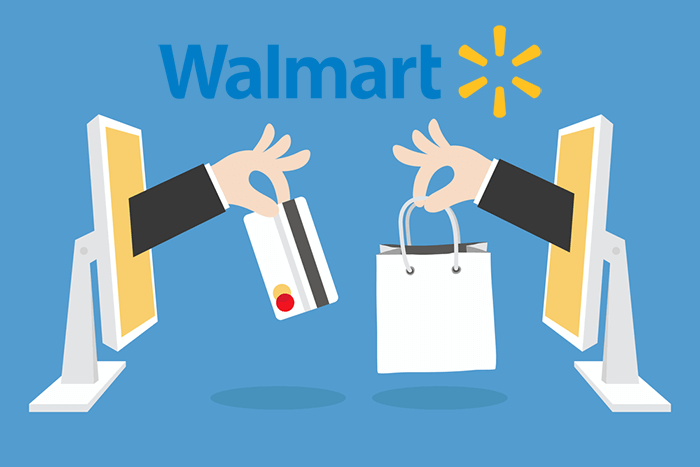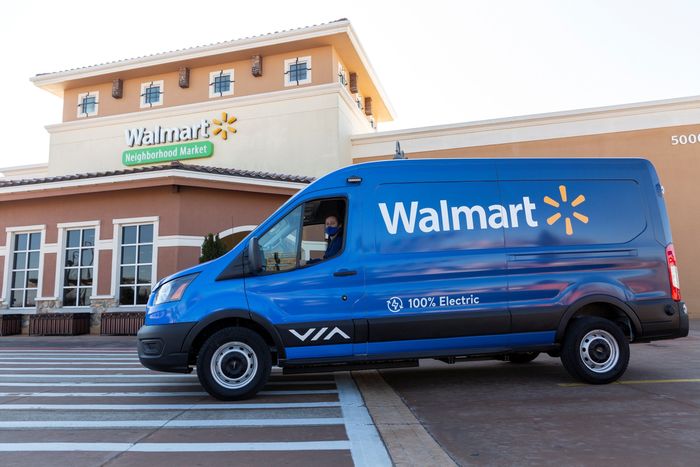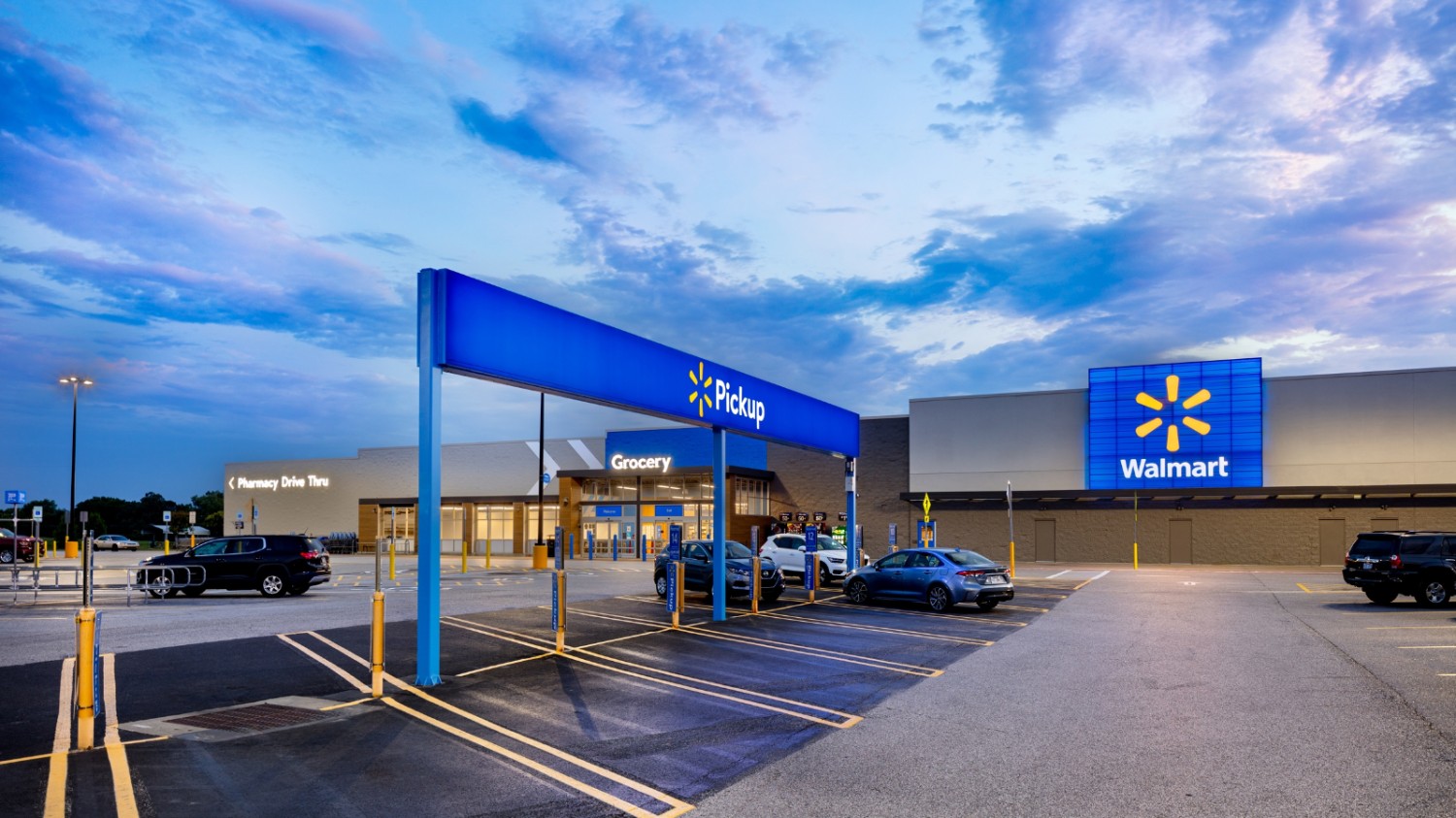The Walmart household name has made an enormous impact in the retail world of hypermarkets and experienced immense growth since its humble beginnings in 1962. Operating approximately 11,000 discount department and grocery stores, Walmart is the largest company by revenue worldwide, with almost US $570 billion annually and 2.2 million employees. The brand’s presence extends to numerous countries and various retail formats, like warehouse clubs, eCommerce websites, and supercenters. Without a doubt, these insane numbers and facts have made this retail Goliath a worthy candidate for a dedicated case study and a deep dive into the Walmart marketing strategy. By examining the Walmart sales methodology and localized marketing, our readers will gain valuable insights into successful retail business models and the future of creating optimized customer experiences.
Table of Contents
- > Looking into the beginning and development of Walmart
- > The elements of the Walmart marketing strategy
- > The Walmart marketing strategy and its comprehensive shift towards omnichannel
- > Analyzing Walmart’s eCommerce website
- > Intriguing tech Walmart is presently applying
- > Fascinating stats regarding Walmart
- > The most recent news of Walmart
- > Discover more resources about FMCG retailers
- > What we gained from studying the Walmart marketing strategy
Looking into the beginning and development of Walmart
The first Wal-Mart Discount City store opened on July 2, 1962, by Sam Walton at 719 W. Walnut Street in Rogers, Arkansas, and by 1989, it had become the largest retailer in terms of revenue in the USA. Since then, Walmart has expanded its operations and subsidiaries in Canada, the UK (ASDA), Central and South America, and China. But let’s take it from the beginning and examine the evolution of this enormous brand in detail to get a clearer view.
Early days
Incorporated under Delaware General Corporation Law, the company officially adopted the name Wal-Mart Stores, Inc. in 1970, when it opened its first distribution center in Bentonville. The center included 38 stores, generating $44.2 million in sales and operating with a workforce of 1,500 employees. It secured a listing on the New York Stock Exchange with its first stock split in May 1971 at $47 per share. Later on, the Walmart brand expanded to four states: Kansas, Louisiana, Missouri, and Oklahoma, entering Tennessee, Kentucky, and Mississippi in ‘73 and ‘74, respectively. By 1975, Walmart had 125 active stores, 7,500 employed, and $340.3 million in total sales.
Expansion and Development
The ‘80s were an experimental period for Walmart, as the brand opened the first Hyper-Mart, bringing the supercenter precursor to light. Hyper-Mart owned four different types of stores combined, including discount stores, video arcades, pharmacies, supermarkets, and more. The enormous exponential growth continued, and by its 25th anniversary, Walmart had established 1,198 stores and billions of dollars in sales. It is said that the secret to Walmart’s growth was the strategic pattern of expansion over time and the fact that they were building distribution centers in hubs with proximity to Supercenters.
In 1987, Walmart invested $24 million in the company’s satellite network, a significant and radical innovation for this period. The network was linking all the stores through two-way voice and data transmissions and one-way video communications with the main office in Bentonville. This groundbreaking investment allowed Walmart to create an enormous private satellite network, aiding the company in monitoring its sales and inventory while communicating with its stores in real time. In 1988, Sam Walton gave his position as CEO to David Glass, but he kept his position as chairman of the board.
As the mid-1990s approached, Walmart established its brand as the predominant retail force in the U.S., opening stores in Mexico, Canada, and the rest of the United States. In 1995, it entered the North American market with stores in Argentina and Brazil, following an expansion in Europe with the acquisition of ASDA in the United Kingdom in 1999.
In 1998, Walmart brought a new, original concept, the Neighborhood Market, debuting with three brick-and-mortar stores in its home state, Arkansas. By 2005, the company’s authority in the retail grocery and consumables sector had skyrocketed, and estimations show that Walmart commanded approximately 20% of the market.
The new millennium steered Walmart into a complete transformation when H. Lee Scott assumed the roles of president and CEO. During his leadership, the company’s sales soared to an astonishing $165 billion by 2000. In 2002, Walmart achieved an additional milestone as it secured the first spot on the prestigious Fortune 500 list, with staggering revenues of $219.8 billion and profits reaching $6.7 billion. Walmart’s dominance was, once again, reaffirmed, as it held this position consistently every year, except for 2006, 2009, and 2012.
By 2005, Walmart’s worldwide reach had been significant, reporting $312.4 billion in sales with a network of over 6,200 facilities globally. This footprint included 3,800 stores in the United States and an additional 2,800 stores, employing over 1.6 million associates. The company’s presence in the U.S. was so vast that only isolated regions of the country remained more than 60 miles (97 kilometers) from the nearest Walmart store.
The elements of the Walmart marketing strategy
Walmart has become a literal empire, ascending to a prominent position in the retail industry. Its strategic innovation, dedication to accommodating customer needs, and never-ending commitment to cost-effective solutions. These principles have been at the forefront of the Walmart marketing strategy since its inauguration, so let’s explore how it turned into an industry giant.
Target markets and customer personas
Walmart refers primarily to low to middle-class demographics and families residing in rural areas, so the brand builds on the notion of guaranteeing low prices every day. This segment desires and seeks the convenience of one-stop shopping, emphasizing competitive pricing and affordable solutions when making their purchasing decisions. The Walmart success story lies in the comprehension of the preferences and needs of this audience, thus tailoring its offerings to align with prevailing consumer trends and demands.
Environmental initiatives, social responsibility, and community engagement
Walmart’s commitment to environmental sustainability, ethical sourcing, and community development is at the core of its overarching brand strategy, aimed at enhancing brand equity and fostering enduring customer loyalty. The corporation actively engages with local communities through strategic initiatives such as sponsorships, fundraisers, and charitable donations, bolstering its reputation and cultivating strong loyalty among its customer base.
In a pivotal move in November 2005, Walmart unveiled a comprehensive set of environmental initiatives, marking a significant shift in its corporate ethos. Among the prominent objectives outlined was an annual allocation of $500 million towards achieving a 25% enhancement in fuel efficiency across Walmart’s expansive truck fleet within three years, with an ultimate goal of doubling it within a decade. Simultaneously, Walmart pledged to effect a substantial 20 percent reduction in greenhouse gas emissions over seven years, coupled with a concerted effort to curtail energy consumption at its stores by an ambitious 30 percent. Additionally, the company aspired to achieve a commendable 25 percent reduction in solid waste generated by U.S. stores and Sam’s Clubs within three years.
Walmart’s global eCommerce division

Walmart’s Global eCommerce division manages online retailing for multiple brands, including Walmart, Sam’s Club, and Asda, operating domestically and internationally. It has operational centers in various U.S. locations like California and Oregon and global hubs in cities such as Shanghai, Leeds, and Bangalore.
To compete with Amazon.com, Walmart strategically acquired Jet.com in September 2016 and expanded its e-commerce capabilities by adding Parcel, a New York-based delivery service, in September 2017. In February 2017, Walmart acquired Moosejaw, an online outdoor retailer, granting access to over 400 partner brands. Marc Lore, Walmart’s U.S. e-commerce CEO, emphasized the synergy between their extensive physical store network and digital expansion, with physical stores serving as efficient e-commerce warehouses. Walmart introduced in-store pickup for online orders in 2017, initially at 1,000 stores, with plans for broader implementation across all retail locations.
Product diversification and private labels

The Walmart marketing strategy revolves around meeting customer demand effectively. Their approach includes an extensive product range covering categories like food, tools, furniture, appliances, health, wellness, and entertainment. This retail giant leverages bulk purchasing to capitalize on economies of scale, nurturing strong supplier relationships while exclusively selling its brand products in Walmart stores.
A significant aspect of the Walmart marketing strategy involves developing private label brands such as Great Value and Equate, offering quality products at competitive prices. Approximately 40% of Walmart’s product offerings are these private labels, a concept introduced in 1991 with the launch of Sam’s Choice beverages, which quickly gained popularity. This strategy has solidified Walmart’s brand presence and customer perception in various markets, exemplifying its dominance in the retail sector.
Supply chain and inventory management

Walmart is well-known for its efficient management of inventory and supply chains, which allows the company to offer competitive prices while maintaining exceptional customer service standards. One of its pivotal tactics involves maintaining a well-organized network of distribution centers that facilitates the seamless pickup and direct delivery of orders to customers. This approach enables precise tracking of product availability and in-transit status, enhancing overall supply chain management. Additionally, Walmart nurtures robust supplier relationships and employs streamlined supply chain management processes, ensuring competitive pricing for its customers.
Decentralized distribution centers
A critical strategic decision that sets Walmart apart is its decentralized distribution center model. Rather than focusing solely on achieving economies of scale with massive centralized warehouses, the company prioritizes establishing numerous distribution centers strategically placed to serve surrounding stores efficiently. Walmart strategically positions its stores, particularly in the United States, to maximize business potential with meticulous geographic planning that contributes to high brand recall and accessibility for customers. The objective is to ensure that every Walmart store can receive deliveries from a distribution center within 24 hours, thereby effectively mitigating inventory shortages and reinforcing Walmart’s reputation as a one-stop shop.
This emphasis on location extends to the sequence of store construction, with Walmart building stores progressively closer to a distribution center, ensuring optimal delivery capabilities. This approach also grants the flexibility to select retail locations strategically, prioritizing customer-centricity and further enhancing Walmart’s retail capacity in comparison to competitors.
In-house deliveries and data-driven optimized routes

Walmart’s successful strategy includes the comprehensive internalization of its transportation operations, making it one of the world’s largest truck fleet operators. This early decision to invest in an in-house transport system has allowed Walmart to effectively manage its extensive network of stores. The company places great emphasis on driver training and safety, enabling them to maintain an exceptional safety record despite covering over 700 million miles annually.
One key focus for Walmart is minimizing “empty miles,” where trucks travel without cargo, incurring opportunity costs. They achieve this through advanced logistics management software that continuously monitors factors like inventory levels, purchases, and truck positions, enabling efficient route planning. Additionally, Walmart has invested significantly in a robust technological infrastructure, providing real-time insights into store conditions. This data-driven approach allows the company to adapt quickly to changing circumstances and consumer behaviors, optimizing their transportation planning with precision.
Customer loyalty program
Walmart offers the “Walmart Rewards” customer loyalty program, allowing shoppers to gather points through their purchases. The points can subsequently be redeemed for discounts or other valuable benefits, like discounts and gift cards.
The Walmart marketing strategy and its comprehensive shift towards omnichannel
Since 2015, under the leadership of Doug McMillon, Walmart has made significant and radical changes to its omnichannel and digital strategy. Investing approximately $1.2 billion in its eCommerce program, the brand has the customer at the center of its efforts.
Personalized shopping experience
Walmart’s website uses AI and machine learning algorithms to personalize the shopping experience for users. Based on browsing and purchase history, the website provides product recommendations tailored to individual preferences.
Augmented reality (AR)
Walmart has dabbled in AR to improve the online shopping experience. For instance, they’ve tested features that let users take a virtual “try before you buy” approach with certain products, particularly in the furniture and home decor section.
Voice shopping and 3D virtual shopping tour

Collaborating with platforms like Google Assistant, Walmart introduced voice-activated shopping. Customers can add items to their cart using voice commands. At certain points, Walmart has experimented with a 3D virtual shopping tour, allowing users to navigate through a virtual home and shop for products as they explore.
Walmart Fulfillment Services (WFS) end easy reorder
Using data analytics, Walmart’s website has a feature that tracks users’ most frequently purchased items and makes it easy for them to reorder those products in just a few clicks. In addition, for third-party sellers, this tech ensures that partnered sellers can leverage Walmart’s storage, packing, and shipping expertise, which streamlines the online buying process for customers.
Walmart+
Walmart introduced its subscription service, similar to Amazon Prime. The tech behind it integrates with the website to offer subscribers benefits like free shipping, fuel discounts, and mobile scan-and-go features.
Blockchain technology, and order tracking
For certain products, Walmart uses blockchain technology to trace their journey from source to store. This increases transparency in the supply chain and assures customers of product authenticity. To enhance customer support, Walmart’s website includes order tracking so that customers can monitor their orders easily.

Analyzing Walmart’s eCommerce website
Walmart is undoubtedly one of the top and most highly evaluated retail brands out there. We’ve analyzed four-page templates of their site to identify eCommerce best practices and mistakes you should avoid.
A. Analyzing Walmart’s Homepage
What we liked
- Sticky header with a lot of relevant and on-point suggestions
- “How do you want your items?” section so that customers can choose whether they want their products shipped, picked up or delivered.
- Different offers across different products above the fold
- Engaging videos
- Prominent and super clear search bar
- Distinct categorization on the header
- Easy access to the Walmart+ loyalty program
- Fast reorder option
What we didn’t
- The homepage has a lot of information and too many CTAs, so this can be a little distracting
- No drop-down menu on the categories
- The “Give feedback” button would work better if it wasn’t on the footer
B. Analyzing Walmart’s category page

What we liked
- “Express delivery” reminder above the fold so that customers can book their slots
- Additional categorization inside the category page
- Seasonal products
- Limited-time, online, weekly deals to increase urgency
- “Build your cart” suggestions section with best-selling products and direct CTAs that are placed strategically
- “Under $5” and “Under $10” products that appeal to bargain-hunting visitors
What we didn’t
- Like the homepage, the category page is a little crowded on information
- Each category has too many different sets of subcategories, and the consumer can get easily lost. Sometimes the subcategories are irrelevant to the main category, and this can increase frustration.
C. Analyzing Walmart’s product page

What we liked
- Free shipping with no order limit banner on top of the product
- “Add to favorite” heart-button
- In-store location of the product
- Product suggestions and best-selling products in the same category
- Nutritional facts and extensive product information
- High-resolution product pictures
What we didn’t
- Too many sections for related product recommendations
A. Analyzing Walmart’s checkout process

What we liked
- Instant add-to-cart functionality with recommended products
- Last-minute booking slots for deliveries and pick-ups
- Savings reminders and additional shipping costs included
- Sticky “Continue to checkout” CTA
What we didn’t
- No guest check-out
Intriguing tech Walmart is presently applying
Using the buildwith tool, we scanned Walmart’s website and highlighted the most impressive technologies spotted.
- Bazaarvoice: Specializes in providing solutions for businesses to collect, manage, and analyze consumer-generated content.
- Omniture SiteCatalyst: Digital analytics tool that helps businesses track and analyze user interactions and behaviors on their websites.
- Adobe Dynamic Tag Management: Solution that manages and deploys various marketing tags and code snippets on their websites
- LiveRamp: Data connectivity platform that enables companies to connect, control, and activate their data
- ThreatMetrix: ThreatMetrix provides digital identity and fraud prevention solutions.
- PerimeterX: This solution protects web applications and APIs from automated threats, such as bots, scrapers, and fraudsters.
- Rollbar: Error tracking and debugging platform for software developers.
Fascinating stats regarding Walmart
- As of 2023, Walmart operates a vast network of 10,622 stores and clubs spanning 24 countries.
- In April 2023, there were a total of 4,717 Walmart establishments in the United States.
- Walmart caters to a staggering customer base, serving over 37 million individuals daily and exceeding 230 million customers weekly.
- Globally, Walmart achieved a substantial revenue of approximately $573 billion.
- Walmart’s e-commerce segment generated impressive sales totaling $53,921 million.
- Daily, Walmart’s revenue surpasses the remarkable sum of $1.5 billion.
- Walmart.com commands a notable 6.3% market share within the United States.
- Walmart’s international stores collectively contributed to net sales amounting to $81.1 billion.
- With a global workforce of 2.3 million associates, 1.6 million of them are based in the United States.
- Walmart’s eCommerce experienced remarkable growth during the pandemic, with a 74% increase.
- As of 2023, Walmart.com recorded an impressive 407.8 million visits to its platform.
The most recent news of Walmart
- Walmart and Wing Team Up To Provide the Convenience of Drone Delivery (corporate.walmart.com)
- Walmart Chile To Create First Industrial-Use Green Hydrogen Production Plant in Latin America (corporate.walmart.com)
- These 5 Career Pathways Are Helping Walmart and Sam’s Club Associates Transition to the Future of Retail (corporate.walmart.com)
- School is in Session: How Walmart Helped Teachers and Students Ace the Back-to-School Season (corporate.walmart.com)
- Climate activists attack Walmart heiress’ $300m yacht – again (independent.co.uk)
Discover more resources about FMCG retailers
- ALDI’s marketing strategy: The key growth ingredients of the FMCG titan
- Sainsbury’s Marketing Strategy: Becoming the Second-Largest Supermarket Chain in the UK
- Tesco Case Study: How an Online Grocery Goliath Was Born
- Analyzing Lidl’s Marketing Strategy: How the Discount Supermarket Leader Scaled
- Argos Marketing Strategy: How the UK Catalog Retailer Nailed Omnichannel
- The Marks and Spencer eCommerce Case Study: 3 Growth Lessons for Retailers
- The Ocado marketing strategy: How it reached the UK TOP50 retailers list
- ASDA’s marketing strategy: How the British supermarket chain reached the top
- FMCG Marketing Strategies to Increase YOY Revenue
What we gained from studying the Walmart marketing strategy
Walmart’s journey to becoming a retail powerhouse is not a stroke of luck but a reflection of its meticulously crafted and executed marketing strategy. This strategy encompasses both traditional brick-and-mortar retail as well as a robust digital presence. In a constantly evolving retail environment, Walmart understands that staying stagnant is not a viable option; they embrace innovation and adaptability as core principles in their quest for continued success.
Before embarking on a comprehensive customer engagement solution, conducting extensive market research becomes imperative. ContactPigeon’s expertise on the latest best practices in retail, eCommerce, and omnichannel customer engagement has helped hundreds of retailers in Europe and the USA. Enhance your understanding of retail strategies by taking the initiative to schedule a free 30-minute consultation session with our experts today. This will aid you in delving deeper into the intricacies of effective customer engagement strategies according to your brand’s needs and your audience.
Contact us to discuss how we can drive growth through your CSR strategy for your retail brand.

Let’s Help You Scale Up





![Benchmarking Growth Strategies of Top Fashion Retailers [Study]](https://blog.contactpigeon.com/wp-content/uploads/2025/11/top-fashion-retailers.jpg)